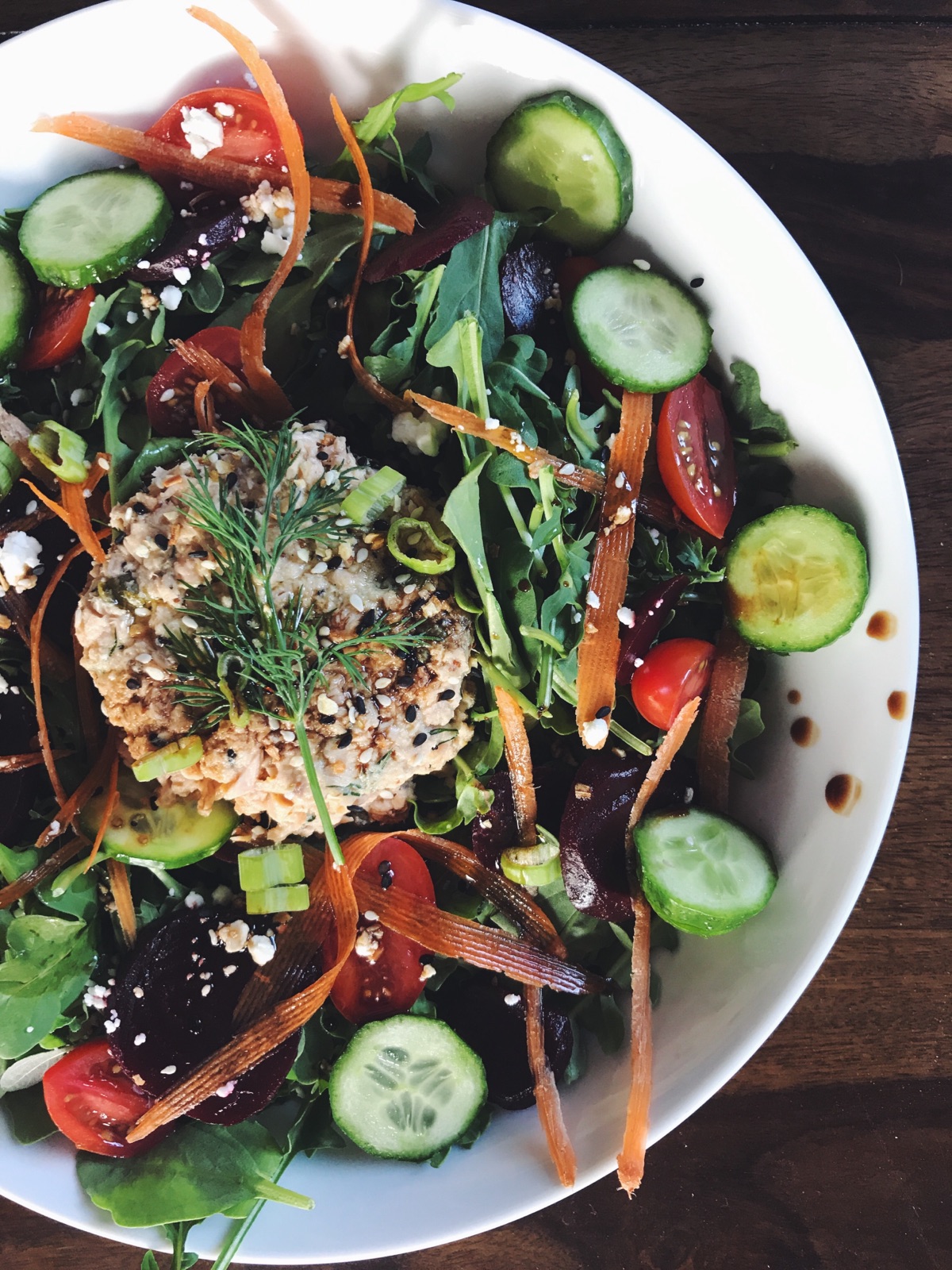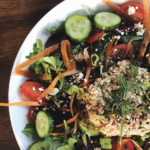
Tuna salad was a household staple growing up. We’d add it to toasted sourdough bread, scoop it up with Triscuit crackers, or add it to a few crispy romaine lettuce leaves. My mom would throw together a few ingredients — freshly squeezed lemon juice, sea salt and black pepper, mayo, and capers — and we would dive right in.
Fast forward 15 years, and I don’t crave tuna salad like I used to. I’m also weary of toxins and contaminants in the environment, and certain types of tuna have high mercury levels (also, most canned tuna is loaded with sodium!). You can read more about tuna’s mercury levels here. Instead, I now opt for a hearty salmon salad made with Alaskan salmon, creamy avocado, spicy dijon mustard, aromatic capers, and fresh dill.
When it comes to navigating the canned fish aisle, there are some products that are best avoided altogether — whether due to environmental concerns, sustainability, toxicity, labor ethics, or all of the above. As a conscientious shopper, I ensure that the label indicates the salmon I’m buying is either Alaskan pink salmon, sockeye, or red salmon. All of these terms indicate that the salmon is a) wild and b) from North American waters. The Alaskan salmon fishery is one of the most well-managed, safe, and sustainable fisheries in the world, so as long as your salmon is wild-caught, it’s almost always an ethical choice.
If a can indicates that the fish is Atlantic salmon, keep in mind that Atlantic salmon is always farmed; this type of fish has essentially been driven to extinction in the wild. Farmed salmon, of course, is a poor choice due to antibiotic use, toxins such as PCBs (man-made chemicals like carbon and chlorine), and pollution of waterways (where the salmon are kept in vast pens). You should also try to avoid salmon that has been shipped overseas for processing. If the label tells you your salmon is a “product of Thailand,” that means the fish was caught in the U.S., shipped across the world, processed, and then shipped back for sale. Appetizing? I didn’t think so!

All of that said, canned pink or sockeye Alaskan salmon is low in contaminants and high in heart-healthy omega-3s. It’s also ethically caught in Alaska and priced very well, making it a great choice all around. Now, there is no denying that fresh salmon is a powerhouse, but it’s expensive and sometimes finding wild-caught sockeye is hard to do. That’s why I love canned salmon —it’s cheaper, super versatile, and can be used in salmon cakes, salads, seafood stews, and pastas. That said, when I’m not buying canned salmon, Pride of Bristol Bay is my go-to! Their salmon is sustainably harvested, and I keep it in my freezer.
For this recipe, you can easily the salmon salad to a bed of arugula or massaged kale, use it as a spread on fresh bread, serve it with cucumbers, carrots, celery, or radishes, etc. The options are endless, and I promise you won’t miss the mayo. It makes for a fast weeknight dinner, desk lunch, or weekend snack. Enjoy!

Healthy Avocado Salmon Salad
Ingredients
- 2 cans wild-caught, boneless, skinless, Alaskan pink salmon (otherwise, bake + cool a medium-sized filet of Pride of Bristol Bay sockeye salmon)
- 1 small small ripe avocado (or 1 heaping tbsp mayo)
- 1 tbsp dijon mustard
- 2 tsp minced garlic
- 1/4 cup capers
- 3 tbsp fresh dill
- juice of 1 lemon
- cracked black pepper and red chili flakes to taste (optional)
Instructions
- In a large mixing bowl, add the canned / cooled salmon and pitted avocado. Mash together.
- Into the large mixing bowl, add your dijon mustard, minced garlic, and lemon juice. Mix together. Fold in your capers, chopped dill, black pepper, and red chili flakes.
- Place the mixing bowl into the freezer for 10 minutes (or into the fridge for 30 minutes). Serve chilled.
- This serves 2-4 people, but it can be enjoyed as leftovers the next day (just store in an air-tight container in the fridge).



Leave a Reply